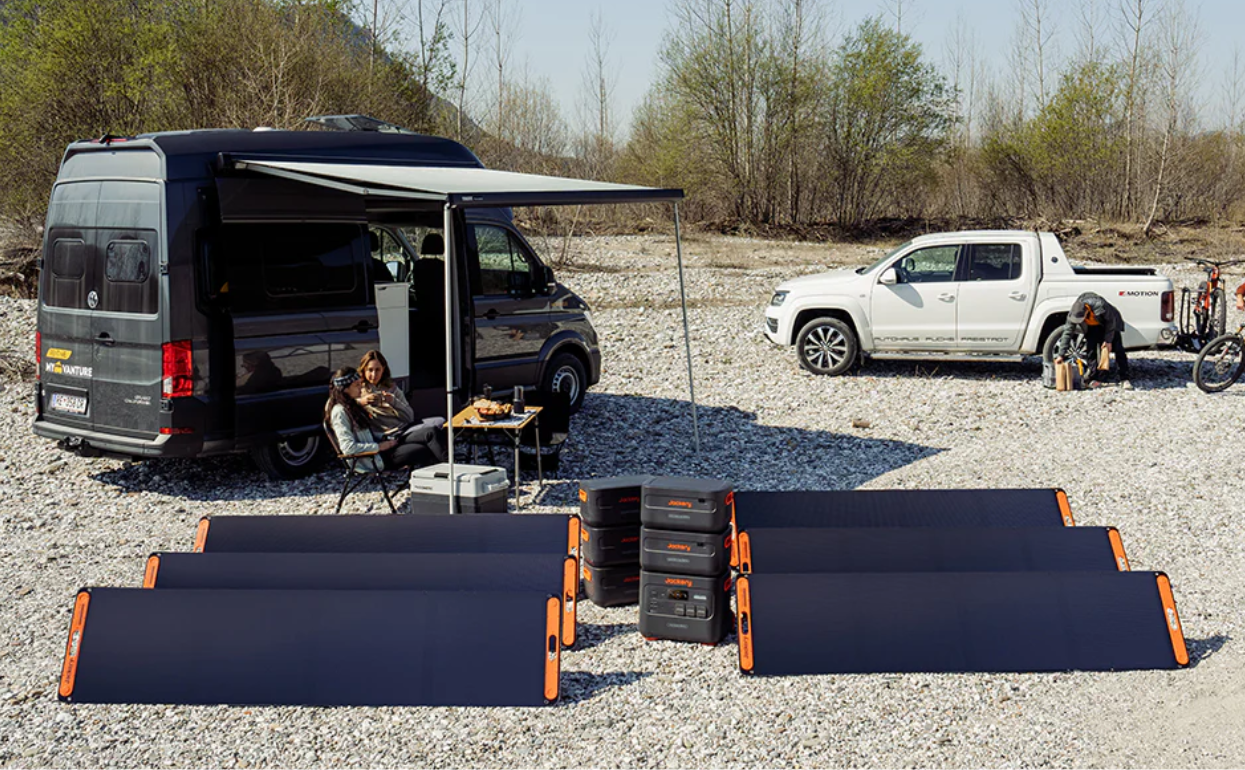3,320 KM
The Tour de France route in 2025 spans an impressive 3,320 kilometres, a figure that encapsulates more than just the physical length of the race. This distance represents a meticulously crafted journey through France's diverse landscapes, designed to challenge the riders' endurance, strategy, and versatility.
This route also reflects the logistical complexity of this year’s Tour de France. Riders will face significant transfers between stages, with nearly 48% of the total distance involving travel between finish and start locations. This aspect adds another layer of challenge, requiring teams to manage recovery and preparation meticulously.
One More Thing
Notably, this year’s route is entirely set within French borders, a nod to tradition since 2020.
21 Stages
This year, the Tour de France route comprises 21 stages, a traditional format that balances various terrains and challenges, testing the riders' versatility and endurance over three weeks. It offers a mix of flat, hilly, and mountainous stages, along with individual time trials, providing opportunities for different types of riders to shine.
Summary of 21 Stages
7 Flat Stages: Designed for sprinters, these stages offer high-speed finishes and are crucial for teams aiming for stage victories.
6 Hilly Stages: These stages feature rolling terrain, favouring breakaways and punchers who excel on short, steep climbs.
6 Mountain Stages: Including five summit finishes at Hautacam, Luchon-Superbagnères, Mont Ventoux, Courchevel Col de la Loze, and La Plagne, these stages are pivotal for general classification contenders.
2 Individual Time Trials: A 33 km flat time trial in Caen (Stage 5) and an 11 km mountain time trial to Peyragudes (Stage 13) test riders' solo efforts against the clock.

Spotlight of Each Stage
On 2025’s Tour de France route, some stages can decisively swing the battle for jerseys and the general classification.
Flat: Stage 3--Valenciennes to Dunkirk (178 km)
With only sprint stages available early, top sprinters (e.g., Jasper Philipsen) will target every available intermediate sprint, and the stage wins to amass points toward the points classification. However, the flat, exposed roads of northern France often feature crosswinds, which could be a challenge for riders.
So, a bunch‐sprint victory in Stage 3 can galvanize a team’s confidence, setting the tone for their riders’ performances in tougher terrain to come.
Hilly: Stage 7--Saint-Malo to Mûr-de-Bretagne (194 km)
The steep ramp at Mûr-de-Bretagne (averaging 6.9 % over 2 km and nearly 10% gradient in the first kilometre) favours explosive riders. The rolling terrain rewards aggressive racing and can allow a strong breakaway group to succeed, forcing major teams to expend energy in the chase.
Mountain: Stage 16--Montpellier to Mont Ventoux (172 km)
Mont Ventoux’s 15.7 km climb at an average 8.8 % gradient, which is one of cycling’s hardest tests and often creates large time gaps. A dominant performance here can mentally fracture rivals—losing time on Ventoux often spells defeat for GC ambitions.
Individual Time Trial: Stage 3--Caen to Caen (33 km)
With only 44 km of total TT in 2025, Stage 5 effort accounts for 75 % of TT distance. This 33-kilometre Tour de France route through the historic city of Caen is built for raw power and aerodynamic finesse.
And with wide, straight roads and barely 200 meters of total elevation gain, it is disproportionately influential on early GC standings: the course is a dream scenario for every rider. Strong all-rounders can seize the opportunity to build a buffer before the mountain stages begin, while climbers may hope to limit their losses.

(Copyright Photo from: https://unsplash.com/photos/a-group-of-people-riding-bikes-down-a-street-5gx6zNsgZqY)
2,304 M
The 2025 Tour de France route reaches its zenith at the Col de la Loze, standing at 2,304 meters above sea level. This ascent, featured in Stage 18, not only marks the highest point of this year's race but also serves as a pivotal moment in the competition.
Stage 18, spanning 171 km from Vif to the summit of Col de la Loze, is a formidable challenge. Riders will confront a series of demanding climbs, including
the Col du Glandon (1,924 m) and
the Col de la Madeleine (2,000 m) before tackling the final ascent to
the Col de la Loze (2,304 m)
This last climb, approached from Courchevel, stretches 26.2 kilometres with an average gradient of 6.5%, culminating at the 2,304-meter summit.
23 Teams
The 2025 Tour de France features a peloton of 23 teams, marking a significant expansion from the traditional 22-team format. This change, approved by the Union Cycliste Internationale (UCI) in March 2025, allows for greater inclusivity and competition among professional cycling teams.
Traditionally, the Tour de France has included 18 UCI WorldTeams, the two highest-ranked UCI ProTeams from the previous season, and two wildcard entries selected by the race organizers, Amaury Sport Organisation (ASO). However, for the 112th edition, the UCI permitted an additional wildcard team, increasing the total to 23 teams. This decision was made to support the growth and visibility of ProTeams, providing them with more opportunities to compete on cycling's grandest stage.
The 23 teams will show up on the Tour de France route in 2025. They are:
|
Team Name |
Classification |
Country |
|
Decathlon AG2R La Mondiale Team |
UCI WorldTeam |
France |
|
Alpecin–Deceuninck |
UCI WorldTeam |
Belgium |
|
XDS Astana Team |
UCI WorldTeam |
Kazakhstan |
|
Red Bull–BORA–Hansgrohe |
UCI WorldTeam |
Germany |
|
EF Education–EasyPost |
UCI WorldTeam |
USA |
|
Groupama–FDJ |
UCI WorldTeam |
France |
|
Ineos Grenadiers |
UCI WorldTeam |
United Kingdom |
|
Intermarché–Wanty |
UCI WorldTeam |
Belgium |
|
Team Visma |
Lease a Bike |
UCI WorldTeam |
|
Movistar Team |
UCI WorldTeam |
Spain |
|
Soudal Quick-Step |
UCI WorldTeam |
Belgium |
|
Arkéa–B&B Hotels |
UCI WorldTeam |
France |
|
Bahrain Victorious |
UCI WorldTeam |
Bahrain |
|
Cofidis |
UCI WorldTeam |
France |
|
Team Picnic PostNL |
UCI WorldTeam |
Netherlands |
|
Team Jayco AlUla |
UCI WorldTeam |
Australia |
|
Lidl–Trek |
UCI WorldTeam |
USA |
|
UAE Team Emirates XRG |
UCI WorldTeam |
United Arab Emirates |
|
Lotto |
UCI ProTeam |
Belgium |
|
Israel–Premier Tech |
UCI ProTeam |
Israel |
|
TotalEnergies |
UCI ProTeam |
France |
|
Tudor Pro Cycling Team |
UCI ProTeam |
Switzerland |
|
Uno-X Mobility |
UCI ProTeam |
Norway |
8 New Towns
On the Tour de France 2025 route, sport riders would pass through 8 new towns in France, each offering unique cultural and historical attractions. Here’s a glimpse into these towns and their notable landmarks:

(Copyright Photo from: https://unsplash.com/photos/men-riding-on-bicycles-ICgpv7lGSO4)
1. Lauwin-Planque (Stage 2 Start)
Nestled in the tranquil countryside of northern France, Lauwin-Planque offers a picturesque setting with its gently rolling fields and serene village charm, making it an idyllic starting point for the second stage on the overall Tour de France route.
One of the village's notable landmarks is the Église Saint-Ranulphe, an emblematic church named after the father of Saint Hadulphe, the Bishop of Arras. This church adds a touch of historical and spiritual significance to the commune.
2. Bayeux (Stage 6 Start)
Bayeux, a picturesque town in the Normandy region, is renowned for its rich tapestry of history and culture. As the starting point of Stage 6 in the 2025 Tour de France route, it offers visitors a unique blend of medieval charm and significant World War II heritage.
The town's most celebrated attraction is the Bayeux Tapestry, an 11th-century embroidered masterpiece nearly 70 meters long, depicting the events leading up to the Norman conquest of England in 1066.
3. Chinon (Stage 9 Start)
Chinon, nestled in France's Loire Valley, is a captivating town that combines medieval history with a rich winemaking tradition. As the starting point for Stage 9 of the 2025 Tour de France route, Chinon offers visitors a unique blend of cultural heritage and scenic beauty.
Chinon is renowned for its Cabernet Franc wines, characterized by their freshness and complexity. The region boasts numerous wineries, such as Pierre & Bertrand Couly and Château de Coulaine, where race visitors can enjoy tastings and learn about sustainable winemaking practices.

(Copyright Photo from: https://unsplash.com/photos/bike-riders-on-road-near-trees-KpqneeL9Uz0)
4. Ennezat (Stage 10 Start)
Ennezat, a charming commune in the heart of France's Auvergne-Rhône-Alpes region, will be the first time to set to gain international attention as the starting point for Stage 10 on the 2025 Tour de France route on July 14th, 2025. Nestled in the fertile Limagne plain, this town offers a blend of historical architecture, Romanesque heritage, and scenic landscapes that captivate visitors.
More importantly, that day is also coinciding with France's National Day. People would come to Ennezat to watch the Tour de France and enjoy the holiday. You can see warm decorations, fantastic entertaining activities, and, of course, exciting audiences and energetic sprinters heading to the mountains. The festive atmosphere, combined with the town's historical charm, makes it an ideal location for spectators and cycling enthusiasts alike.
5. Le Mont-Dore Puy de Sancy (Stage 10 Finish)
As the finish line for Stage 10 on the 2025 Tour de France route, Le Mont-Dore Puy de Sancy promises both thrilling cycling action and a wealth of beauty for visitors, one of which is hiking. Le Mont-Dore is a hiker's paradise, boasting over 670 km of trails. You can breathe one of the freshest airs in France and appreciate the beauty of French summer there.
6. Bollène (Stage 17 Start)
Bollène, a beautiful town in the Vaucluse department of southeastern France, is set to host the start of Stage 17th of the 2025 Tour de France. Centred at the crossroads of Provence, Drôme, Ardèche, and Gard, Bollène is full of cultural and architecture dating back to the 12th century, such as Collégiale Saint-Martin and Chapelle Saint-Blaise. It deserves to spend a couple of days to experience the beauty of Romanesque style.
7. Vif (Stage 18 Start)
At the foot of the Vercors Massif, Vif seamlessly blends magnificent beauty with the decisive courage for cyclists to conquer difficulties. For visitors, Vif's proximity to the Vercors Regional Natural Park makes it an ideal base for outdoor enthusiasts. The park offers a plethora of hiking trails, showcasing diverse flora and fauna, as well as stunning geological formations.
8. Mantes-la-Ville (Stage 21 Start)
As the final start of the 2025 Tour de France route and the final starting point to enter Paris, Mantes-la-Ville, a commune in the Yvelines department of the Île-de-France region, is located at the confluence of the Seine and Vaucouleurs rivers.
Here is renowned for its contribution to the world of music, particularly in the manufacturing of wind instruments. The town is home to the headquarters of two world-renowned makers: Henri Selmer and Buffet Crampon. These companies have been instrumental in producing high-quality clarinets and saxophones, cementing Mantes-la-Ville's reputation in the global music industry.
And as Stage 21 of the Tour de France begins here, the town fittingly matches the trumpet of triumph for the riders heading toward the Champs-Élysées.
How to Experience the Tour de France 2025 as a Cycling Enthusiast?
Witness cyclists on the Tour de France route is a dream for many enthusiasts. With new towns and challenging routes in 2025, it's the perfect opportunity to immerse yourself in the excitement.
To make the most of your journey, consider the latest information about each stage and bring a Jackery’s solar generator to enhance your overall experience.

1. Before the Race: Jackery Solar Generator 1000 v2
Embarking on a road trip across Europe to follow the Tour requires reliable power for your devices and appliances. The Jackery Solar Generator 1000 v2 is an ideal companion. It has two major conponents: a Jackery Explorer 1000 v2 Portable Power Station and a Jackery SolarSaga 100/200W Solar Panel (depends on your choice). As a result, it can offer:
High Capacity: With a 1,070Wh capacity and 1,500W continuous AC output (3,000W surge), it can satisfy every charging demand for your mobile devices on the road to the town that cyclists would pass through
Portability: Despite its power, it remains portable and only weighs 10.8 Kg on the part of the battery inverter, ensuring you have energy wherever cyclists will arrive
Fast Charging: Equipped with upgraded ChargeShield 2.0 technology and allowed three ways to charge (solar via Jackery SolarSaga 100W/200W Solar Panels on the complete set, AC and car-port), it offers diverse charging modes, including fast charging and emergency supercharging. You do not have bilateral battery anxiety.
2. During the Race: Jackery Explorer 240 v2 Portable Power Station
If you are a local of the new town or are easy to come and join in the crowds celebrating, the Jackery Explorer 240 v2 Portable Power Station is a simpler version to power on the race.

Compared with the Jackery Solar Generator 240 v2, the Jackery Explorer 240 v2 Portable Power Station is only a battery storage inverter that is still compatible with solar panels to charge. You can use it for:
Portable Power: The Jackery Solar Generator 240 v2 boasts a 256Wh capacity and 300W output, perfect for powering LED signs or charging devices while watching the Tour de France.
Multiple Ports: It features one 100W USB-C port, one 15W USB-C port, and one 15W USB-A port, supporting fast charging for multiple devices simultaneously.
Compact Design: 7.2 Kg Lighter than Jackery Explorer 1000 v2 Portable Power Station, this portable power station is easy to carry, and it ensures you can set up your cheering station anywhere along the route.
3. After the Race: Exploring with Jackery Solar Generator 500
Want to explore deeply the Tour-pass-through towns after the race? The Jackery Solar Generator 500 enhances your travel experience, no matter whether you want to pay the winery a visit in Chinon or go hiking in Puy de Sancy or more explorative places. That’s because:
Versatile Charging: With three USB ports, an AC outlet, and a 12V car output, Jackery Solar Generator 500 provides stable power to outdoor appliances like fans, portable BBQ equipment, CPAP machines, and more.
Reliable Power: Its 518Wh capacity and 500 W output ensure your devices stay in full for navigation and exploring.
Quiet Operation: Operating at an ultra-quiet 37.9dB, this solar charger for cycling ensures a peaceful environment while powering your devices. You and nature both have a better environment to stay in this moment.

Conclusion
The 2025 Tour de France always allures the best team to conquer and attracts worldwide cycling enthusiasts to watch and cry. Spanning 3,320 kilometres over 21 stages to the top of 2,304 meters, 23 teams will compete in 8 new towns and multiple exciting cities across the nation this summer. The Tour de France continues to blend tradition with innovation, offering fresh challenges and narratives for both riders and fans.
And Jackery's solar generators ensure a seamless experience. Whether powering devices before the race, energizing support signs at Tour de France stages, or facilitating post-race explorations, these tools align with the Tour's spirit of endurance and innovation.
References
[1] Available at: https://www.letour.fr/en/overall-route
[2] Available at: https://www.velowire.com/article/1177/en/the-tour-de-france-2025-has-officially-been-announced--100--french-----and-48--of-transfers-.html
[3] Available at: http://procyclingstats.com/race/tour-de-france/2025/route/stages
[4] Available at: https://www.cyclingstage.com/tour-de-france-2025-route/
[5] Available at: https://www.alpecincycling.com/en/pro-peloton/preview-tour-de-france-2025-route-stages/
[6] Available at: https://www.cyclingstage.com/tour-de-france-2025-route/
[7] Available at: https://www.canyon.com/en-hk/blog-content/pro-cycling-news/tour-de-france-guide/b04032024-1.html
[8] Available at: https://www.auvergnevolcansancy.com/en/tour-de-france-2025-ennezat-le-mont-dore-puy-de-sancy/
[9] Available at: https://www.auvergnevolcansancy.com/en/tour-de-france-2025-ennezat-le-mont-dore-puy-de-sancy/
[10] Available at: https://en.wikipedia.org/wiki/2025_Tour_de_France
[11] Available at: https://www.letour.fr/en/heritage/stage-10/town/le-mont-dore-puy-de-sancy
[12] Available at: https://www.auvergne-sancy.com/see-and-do/walking-and-hiking/top-5-must-do-hiking-routes-in-sancy
[13] Available at: https://fr.wikipedia.org/wiki/Chapelle_Saint-Blaise_de_Boll%C3%A8ne
[14] Available at: https://provence-alpes-cotedazur.com/en/get-inspired/towns/vaucluse/bollene/
[15] Available at: https://trek.zone/en/france/places/304923/vif
[16] Available at: https://en.wikipedia.org/wiki/Mantes-la-Jolie









